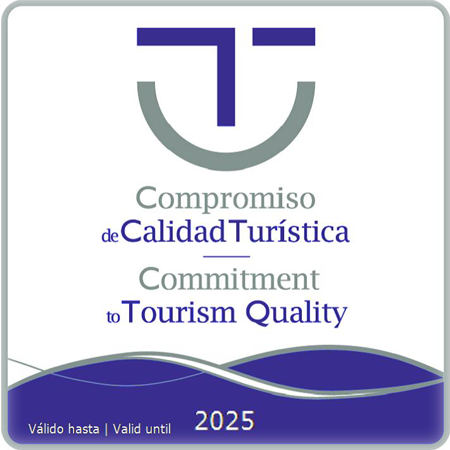 Visitors to the Fuerte de Navidad can find out in detail about the defensive system of Cartagena throughout history. Enrol as a cabin boy on the Tourist Boat and visit the only coastal battery to have been adapted to show the everyday life of military men in a 19th century fortress. Nestled on the right-hand margin of the bay and next to the lighthouse of the same name, the Fuerte de Navidad has been witness to the political, social and military conflicts of recent centuries.
Visitors to the Fuerte de Navidad can find out in detail about the defensive system of Cartagena throughout history. Enrol as a cabin boy on the Tourist Boat and visit the only coastal battery to have been adapted to show the everyday life of military men in a 19th century fortress. Nestled on the right-hand margin of the bay and next to the lighthouse of the same name, the Fuerte de Navidad has been witness to the political, social and military conflicts of recent centuries.
Explore the casemate bunkers, learn how to handle a cannon and find out how the artillerymen ate and relaxed, and round your visit off by enjoying the magnificent views from the terrace and winding down on the return journey aboard the Tourist Boat.
-
Christmas FortFort Christmas
-
Christmas FortMiniature model of the fort
-
Christmas FortGun powder
High season (1st July to 15th September)
Tuesday to Sunday 11.00 to 15.00 and 16.30 to 19.30
Mid-season (from 15th March to 30th June / from 16th September to 1st November)
Tuesday to Friday 11.00 to 15.00
Saturday and Sunday 11.00 to 17.30
Low season (2nd November to 7th December)
Tuesday to Friday 11.00 to 14.00
Saturday and Sunday 11.00 to 16.00
The Fuerte de Navidad closes:
- 1st and 6th January and 25th of December.
- 5th January, 24th and 31st December afternoon.
- from 8th December to 14th March.
* Opening hours may be modified. Please check at destination.
** For special opening hours consult What's on.
*** The groups with previous reservation will have preference in the turn of entry.
Last access up to 15 minutes before closing.
General admission to the Christmas Fort: €4
General admission to the Christmas Fort + Tourist Boat: €10
Reduced admission: €3
Reduced admission to the Christmas Fort + Tourist Boat: €8
*Children under 12 years old, students up to 25 years old, Youth Card and Card Young people +, unemployed, pensioners, retirees, disabled, family (2 or more adults + 2 or more children under 12 years of age), large family card and groups of 20 people or more.
Free entrance:
- Children under 3 years old.
- Official tourist guides.
- Members of the Cartagena Puerto de Culturas Club (except activities).
- Every SUNDAY, during the last 2 hours of the center's opening, access will be free. Applicable only to those who arrive at the center in person, not for online purchases. There will be no refund of entry for a purchase prior to free hours.
- Dolores bank holiday (local holiday).
* To benefit from the reduced or free rate, visitors must purchase their ticket at the box office with valid and current documentation.
**During temporary exhibitions or special activities, ticket prices may be modified.
ON-LINE PURCHASE
Approximate duration: 30 minutes
Timetable:
- High season
Tuesday to Sunday - 11.15, 12.15, 13.15, 16.45 and 17.45
- Mid-season
Tuesday to Friday - 11.15, 12.15 and 13.15
Saturday and Sunday - 11.15, 12.15, 13.15 and 16:45
- Low season
Tuesday to Friday - 11.15 and 12.15
Saturday and Sunday - 11.15, 12.15, 13.15 and 14.15
* These timetables are subject to modification: please consult before planning a visit.
Rules for Guided Tours (PDF - 422,33 KB - Fecha de revisión: 07/11/2024)
Free Online Booking
We'll take the children around the bay of Cartagena in our tour boat to access the Christmas Fort. Here, by completing various tests, they'll learn the strategic and military importance of Cartagena. In collaboration with the CPR of Cartagena.
Learn about the evolution of the fortresses of Cartagena and what weapons were used by the armies that defended the city throughout its history. Carried out in collaboration with the CPR of Cartagena.
Accessibility
Tourism for all is one of the main objectives of Cartagena Puerto de Culturas. We are working to ensure access for as many visitors as possible. At present, the Fuerte de Navidad offers the following facilities for visitors with special needs:
- Architectural barriers have been removed by the installation of ramps and a lift (not suitable for motorized wheelchairs).
- Adapted toilets.
- Audio-visual with voiceover in Spanish and subtitles in English for people with hearing disabilities and impaired vision.
- Audio-visuals with subtitles in English and Spanish for those with impaired hearing.
- Reduced rate for those with disabilities, presenting official proof at the box office.
- Guide dog access is allowed with the corresponding accreditation.
Audio guides
Enjoy your visit with the audio guides provided by the Fuerte de Navidad. Courtesy of new technology you can visit freely and comfortably at your own pace. The audio guide is available in 4 languages: Spanish, English, French and Russian, and costs 2 euros.
Refreshments
There are vending machines at the Fuerte de Navidad selling cold drinks and snacks.
Historical context
Cartagena’s great importance as a military city dates back to the end of the 17th century, when, under the reign of Charles II, it became the winter base of the galley ship squadron. The immediate result was the construction of four defences around the mouth of the port that ensured that ships were protected: the Podadera and the Fuerte de Navidad on the right-hand side and Trincabotijas and Santa Ana on the left.
During the War of the Spanish Succession the stronghold was occupied by the English fighting on behalf of the pretender to the Spanish throne, Archduke Charles of Austria, although their occupation lasted only five months before the Duke of Berwick recovered it for Felipe V. It was under Felipe that Cartagena became the seat of the Maritime Department of the Mediterranean (1726); the awarding of this status led to the further consolidation of the city as a military base in the Mediterranean and was a turning point in the city’s history. This process of consolidation took place during the second half of the 18th century under King Carlos III with the construction of the principal military works of the city: the Arsenal, the Military Hospital, the walls and the fortifications of Galeras, Atalayas, San Julián and Moros.
In the 19th century Spain was mired in many wars and battles and the stronghold of Cartagena was heavily involved, especially in the Cantonal War (1873). The port and its defences were transformed, above all due to technological advances which brought with them a thorough renewal of the fortification systems. It was in this context that the O'Donnell Plan of 1860 was undertaken, including the renovation of the Fuerte de Navidad and other gun batteries belonging to the city.
The Fuerte de Navidad
The origin of the Fuerte de Navidad was the initial 17th-century construction of a small four-piece artillery platform. Its position meant that the line of fire crossed with that of the battery of Santa Ana, which, along with the batteries of Trincabotijas and Podadera, defended the entrance to the port. In the 19th century a new building was created, improving the defences of the old fortification: but technological advances soon rendered it obsolete in military terms and therefore in the early 20th century, it became the gun saluting battery of the port of Cartagena and remained in operation until 1941, when the last garrison departed.
It was designed by Spanish military engineers in the neoclassical style and equipped with casemates. The angular building forms a curve with the open side looking out to sea and is organized around a patio-corridor which gave access to the eight casemates, each of which contained an artillery piece. To protect them from the impact of projectiles a method known as bomb proof vaulting was employed: that is, above the vaults earth and stones were piled to a thickness of more than two metres. At the apex of the angle was the powder store, which contained stocks of gunpowder and the shells for the guns. The firepower was completed with nine other pieces located on the terrace, which were accessed via two spiral staircases. In the rear of the fortress were the other rooms used in the everyday life of the garrison of the fort, with kitchens, latrines and barracks.
Exploitation of the site
The restoration of the Fuerte de Navidad was the first in any element of the defence system of the Bay of Cartagena defence system. The fortress was left neglected until 2004, when the Ministry of Defence ceded it to the Town Hall of Cartagena Town Hall for use in tourism on condition that it should be restored. The restoration project began in 2004, based on a master plan for the entire bay, and was completed in 2007. Architects Francisco Javier Lopez and Ricardo Sanchez were commissioned to oversee the work.
During the restoration phase a thorough search of documentation was performed to establish the different historical phases and research and archaeological were conducted by José Antonio Martínez and David Munuera.
All of these actions were combined under the management of Cartagena Puerto de Culturas and culminated in the opening to the public of the Fuerte de Navidad in 2007.
The tour of the museum:
- Casemate 1. Reception and souvenir shop.
- Casemate 2. The port of Cartagena. A large model depicts the port and its defences in the 19th century.
- Casemate 3. Defensive systems of the port of Cartagena. A summary of the gun batteries and fortresses of the city and its coastline over the course of the centuries.
- Casemate 5. The Fuerte de Navidad. An audio visual showing the building and its history.
- Casemate 6. The artillery. An original 19th-century cannon provides the key to understanding the artillery of the age.
- Casemate 7. History and architecture. Models and information panels show the architecture of the fortress during its various renovations.
- Casemate 8. Everyday life. Illustrations of day-to-day life in the fortress are provided by the recreation of an officer’s office, the artillery uniform, original items found during the excavation and the original outer gate.
- Latrines. Good example of the sanitary facilities and hygiene conditions of the time.
- Kitchen. Contains small hearths and a storehouse, for cooking and preserving the meagre food supplies of the troops.
- Barracks. A room of audio-visual displays and temporary exhibitions. A video shows aerial photographs of the coastline and the defensive systems which existed between the 16th and the 20th centuries.
Bibliography
- Gómez Vizcaino, A. (2003). Castillos y fortalezas de Cartagena. Excmo. Ayuntamiento de Cartagena.
- Martínez López, J.A. (2008). El fuerte de Navidad en el contexto del sistema defensivo del puerto de Cartagena. Tesis doctoral. Universidad de Murcia.
- Martínez López, J.A. y Munuera Navarro, D. (2009). Álbum fotográfico de los fuertes y baterías del puerto de Cartagena (1901).
- Santaella Pascual, F. (2006). La Artillería en la Defensa de Cartagena y su Base Naval. Desde los orígenes al Plan Vickers de 1926. Editorial Áglaya.
- VV.AA. (2004). Estudio y catalogación de las defensas de Cartagena y su bahía. Proyecto “Puertos antiguos del Mediterráneo”.
- VV.AA. (2012). Cartagena Puerto de Culturas. Convirtiendo el pasado en futuro.
Contact
10 Gisbert St. 30202 Cartagena (Spain)Phone +34 968 500 093
Fax +34 968 529 298
Emails:
Social networks
The internet portals of the Hon. Cartagena City Council only uses its own cookies for technical purposes; they do not collect or transfer personal data from users without their knowledge. However, they contain links to third-party websites with privacy policies unrelated to those of said city hall portals, which you can decide whether to accept or not when you access them.
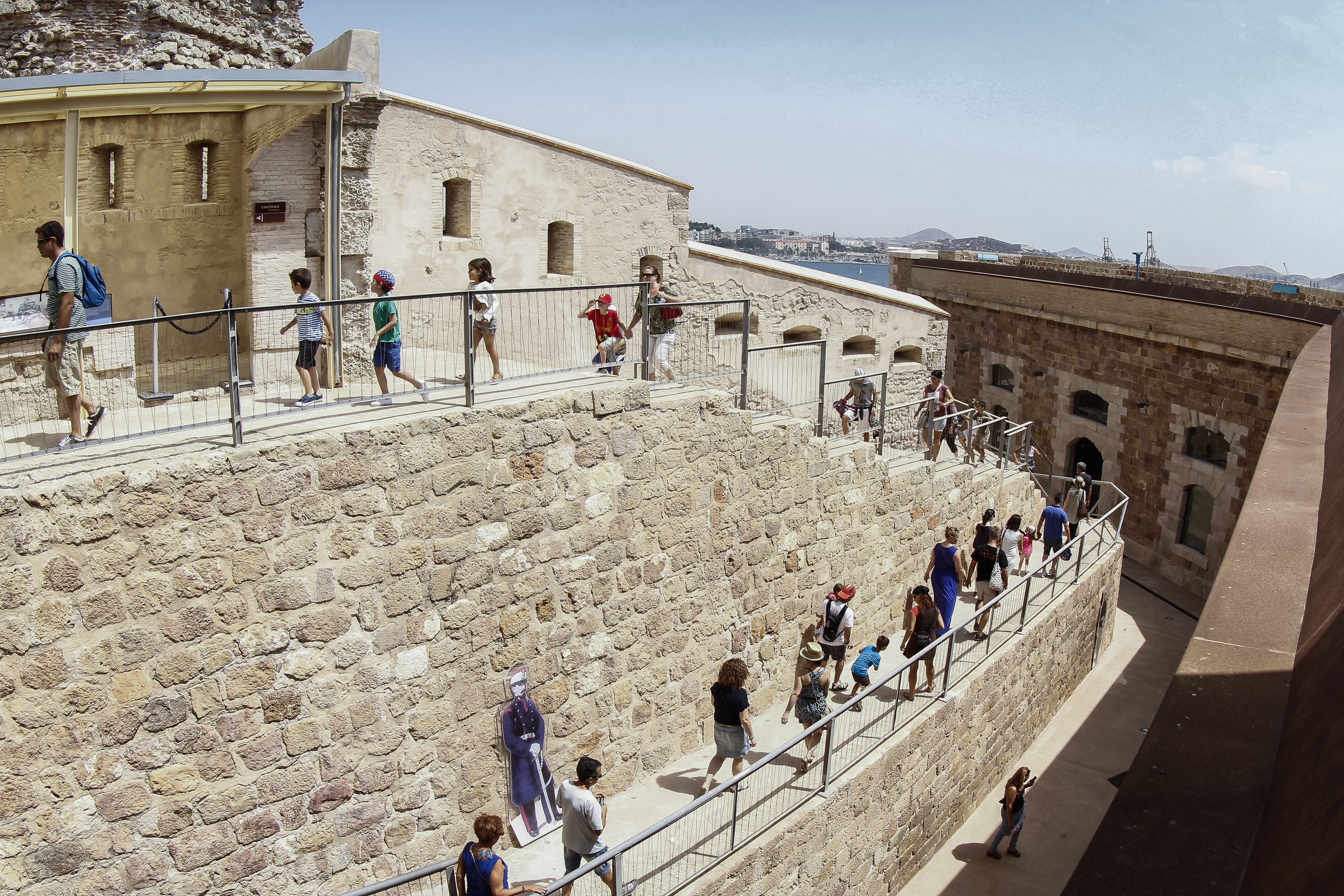
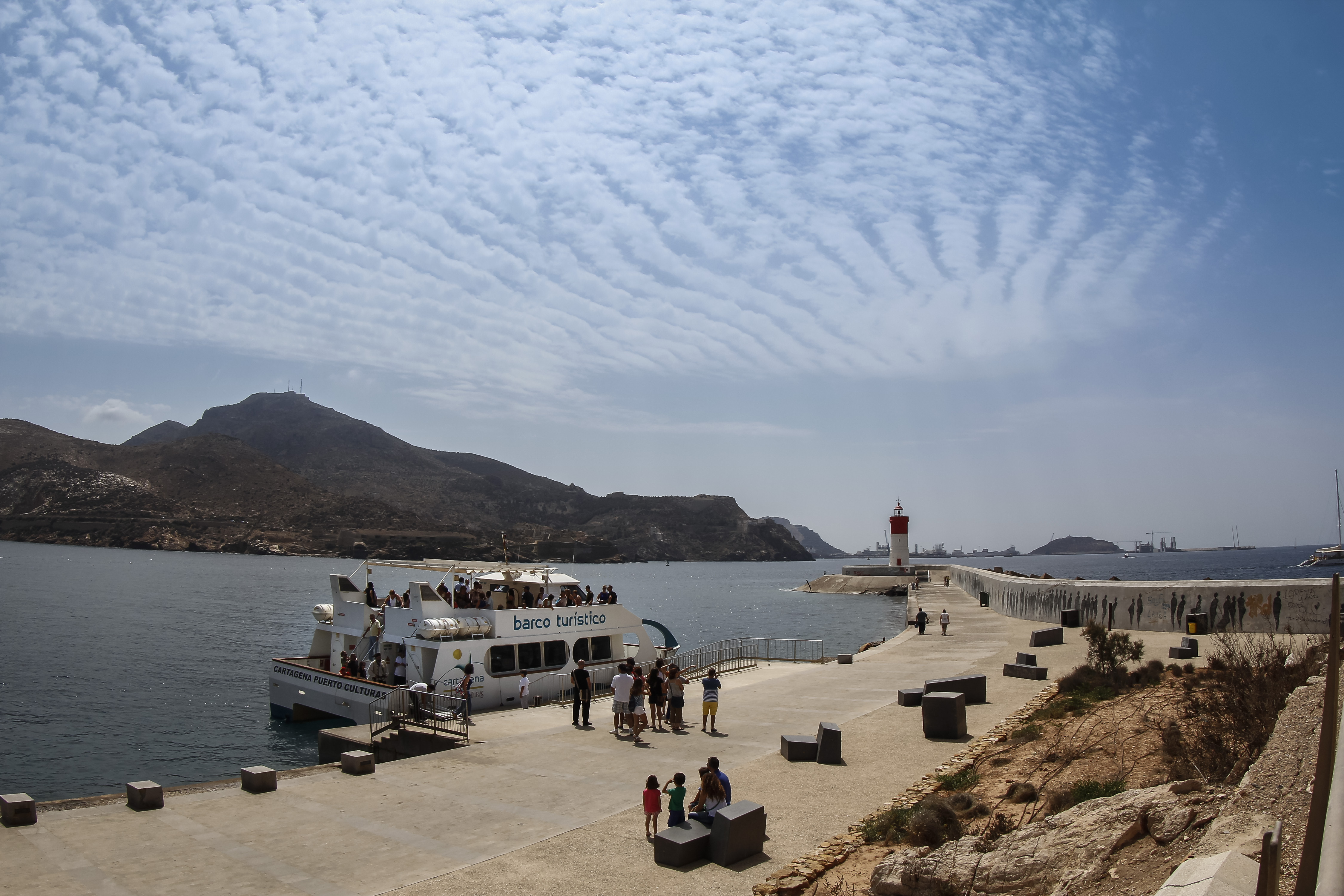

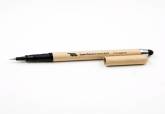
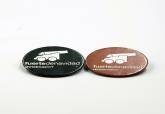

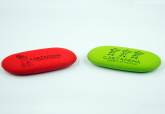
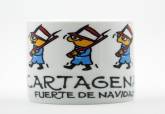
 Tripadvisor
Tripadvisor


